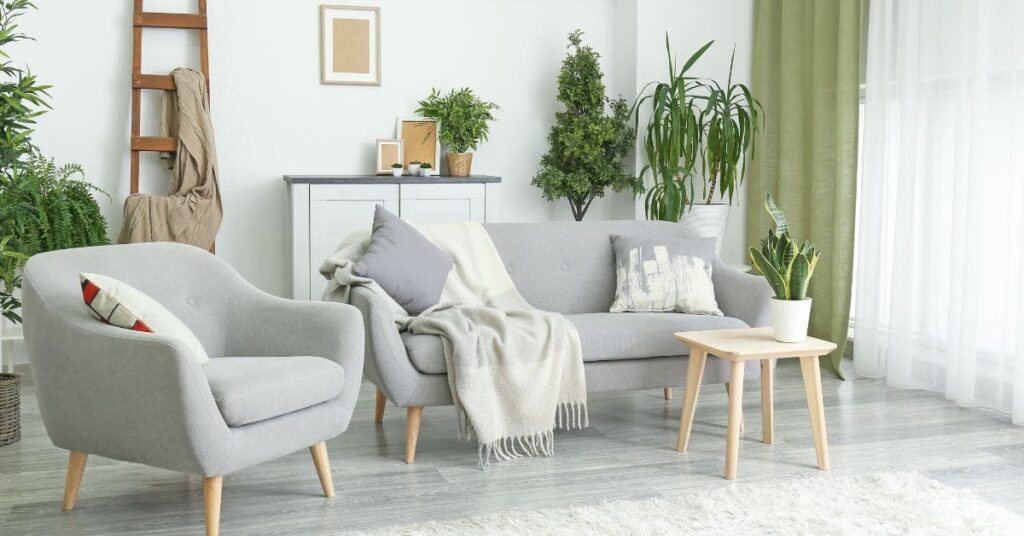
Contents
- 1 Introduction to Living Walls Vertical Gardens
- 2 The Benefits of Having a Living Wall
- 3 Different Types of Living Walls Vertical Gardens
- 4 Choosing the Right Plants for Your Living Wall
- 5 Maintenance and Care Tips for Living Walls
- 6 Creative Ways to Incorporate Living Walls in your Home or Office
- 7 Environmental Impact and Sustainability
- 8 Cost Considerations
- 9 Conclusion
- 10 FAQs
Introduction to Living Walls Vertical Gardens
Welcome from the green realm of living walls vertical gardens! Imagine adding an indoor natural area where vegetation grows vertically, converting lifeless walls into colorful exhibits. Living walls are a creative way to bring nature into urban spaces, whether you want to add botanical beauty or freshen things up. Discover how these living artworks can revitalize your surroundings as we explore the fascinating world of these living art pieces.
The Benefits of Having a Living Wall
Living walls are more than just a way to incorporate greenery into your room. By collecting pollutants and releasing oxygen, they not only make visually striking décor but also enhance air quality. A living walls vertical gardens can help lower stress and boost productivity at home and work. The presence of plants also improves mood and mental health.
Furthermore, living walls vertical gardens serve as organic insulators, assisting in the control of interior temperature and humidity. This could lead to energy savings on heating and cooling costs. Additionally, these living walls vertical gardens support beneficial insects like butterflies and bees, enhancing biodiversity in urban environments. Including a living wall in your design improves environmental sustainability, human health, and aesthetics.
Different Types of Living Walls Vertical Gardens
There are many living walls vertical gardens, each with unique charm and advantages. Moss walls offer a minor nature indoors with their lush, low-maintenance flora. Succulent walls are ideal for those seeking low-maintenance plants that provide a splash of color and texture to any area.
Herb gardens are aesthetically pleasing and offer the convenience of having fresh herbs for cooking or aromatherapy. Flower gardens can add a delightful sensory experience to any space with colorful blossoms and fragrant aromas.
Thanks to the abundance of possibilities, you may mix and combine several plant species to build a customized living wall that precisely matches your demands and style; when it comes to creating your vertical garden, there is something for everyone, regardless of whether you like a more understated aesthetic with Moss or a pop of color with flowers.
– Moss walls
In addition to being aesthetically pleasing, moss walls provide many advantages for your living area.
Moss walls are ideal for restrooms or offices because they evoke a feeling of peace and connection to the outside. Every area is quickly transformed by the rich greenery’s splash of color and texture.
The minimal upkeep needed for moss walls is one of their main benefits. Unlike regular plants, Moss thrives without soil or direct sunshine, making it an excellent option for interior spaces with little natural light.
Moss walls have natural qualities that assist in absorbing sound and lessen echo in large spaces, in addition to their aesthetic appeal. Because of this, they are a sensible option for commercial or office spaces where noise reduction is crucial.
This adaptable plant can infuse life and vibrancy into any space in your house or business, whether you build a whole moss wall or add a few smaller moss panels to your design.
– Succulent walls
Succulent walls are a stylish and low-maintenance way to bring a lush green landscape within. These plants, available in various sizes, shapes, and colors, give any space a hint of organic charm.
Because of their propensity to hold onto water, succulents are ideal for vertical gardens where regular watering can be difficult. Their distinctive patterns and textures combine to create a visually striking display that can quickly take center stage in your house or place of business.
Mix and match different species of succulents to visually appeal to your living wall. Aloe vera, sedum, and echeveria are a few standard options. Choose those requiring equal water and light to ensure your plants flourish together.
Give succulent walls plenty of sunlight and water them sparingly—overwatering can cause root rot. To encourage growth, regularly assess the moisture content of the soil and remove any dead leaves or stems. Your succulent wall will grow gorgeously if you give it the care it needs.
– Herb gardens
Any living wall would benefit from the lovely addition of herb gardens, which enhance your area’s aesthetic appeal and practicality. When you need fresh herbs for cooking or making natural cures, imagine having rosemary, mint, and basil at your fingertips.
Herb gardens provide a splash of color with their vivid greenery and sporadic blooms and fill the air with delightful scents that instantly improve your mood. Herb gardens are adaptable and simple to care for, whether you have a tiny indoor vertical garden or a larger one on an outdoor patio.
Herb gardens offer a multisensory experience that can benefit the body and mind. Their calming scents can improve the flavor of food or encourage relaxation. Additionally, they draw pollinators like butterflies and bees, which enhances the environment of your living wall.
– Flower gardens

Flower gardens are a standard option for living walls since they provide color and energy to any area. Coming into a room filled with the natural scent of flowers in bloom is like bringing the outside in.
Depending on your taste, flower gardens on vertical walls can feature everything from vivid roses to delicate daisies. These floral arrangements are ideal for fostering a tranquil environment in your house or business because they are gorgeous to look at and have a calming impact.
Flower gardens on living walls are now easier to maintain than ever, thanks to advancements in design and technology. With the ease of an automatic irrigation system, you can ensure that your flowers get the proper water.
Whether you choose a spectrum of colors or a monochrome display, flower gardens on living walls can brighten any area and make people happy.
Choosing the Right Plants for Your Living Wall
Selecting the ideal plants for your living walls vertical gardens requires a few considerations. The plants growing the best in your space will depend on how much sunlight they receive.
Next, consider the overall look you wish to accomplish with your living wall. Do you like flower gardens to provide a splash of color or moss walls to create a lush, green look? You may generate distinct moods in your room with different kinds of plants.
Maintenance is another crucial element; certain plants need more attention than others. If you’re short on time for maintenance, go for low-maintenance plants like herbs or succulents.
Consider the plants’ growth potential over time and whether or not they can grow vertically. Select plants that can tolerate growing vertically and won’t outgrow their space too rapidly.
Considering these considerations, you may choose the ideal mix of plants to create a gorgeous and flourishing living wall in your house or business.
Maintenance and Care Tips for Living Walls
You must maintain and care for your living wall to guarantee its lifespan and vitality. Watering regularly is crucial, but avoid overwatering, which can cause root rot. Verify that the growing medium or soil has enough drainage.
Check your plants often for signs of illness or pests. Take quick action to resolve any problems you find to prevent them from worsening. Prune your plants as needed to encourage healthy development and preserve the intended shape of your living walls vertical gardens.
Consider periodically turning your plants to guarantee that every side of the wall receives equal sunlight. This will lessen the chance of one side growing unevenly or lanky. Plants that receive frequent leaf dusting can also photosynthesize more efficiently.
Pay close attention to the unique requirements of each kind of plant on your living wall. Some need different amounts of sunlight or more frequent watering than others. By continuing to be vigilant and proactive, you can enjoy a flourishing and lovely vertical garden in your area!
Creative Ways to Incorporate Living Walls in your Home or Office
Think about adding a living walls vertical gardens! These inventive designs give endless creative options for adorning your house or place of business and bringing nature indoors.
Adding a focal point to any space is one method to include living walls. A vivid living walls vertical gardens can immediately grab attention and improve the space’s aesthetic value in any area, be it the living room, bedroom, or business lobby.
An additional inventive concept is using living walls as organic dividers. By carefully positioning these green installations, you can keep an open and breezy feel while dividing larger areas into more personal pieces.
Hanging or suspended gardens can be a great choice if you have limited floor space. You can enjoy the benefits of lush flora without sacrificing any essential square footage by using vertical surfaces like walls or ceilings.
Adding living walls vertical gardens to unexpected spaces like kitchens or bathrooms can help transform your house or place of business into a revitalizing haven. Moisture-loving plants flourish under these conditions, giving regular activities a spa-like atmosphere.
Thinking creatively when incorporating living walls vertical gardens into your design strategy is essential. You can incorporate nature into every area of your indoor space, from tiny herb gardens in the kitchen to soaring plant arrangements over stairwells.
Environmental Impact and Sustainability
The sustainability and environmental impact of living walls vertical gardens are essential considerations. These green projects significantly improve the health of the environment and the beauty of both indoor and outdoor areas.
Living walls vertical gardens contribute to better air quality by removing pollutants and releasing oxygen. Enclosed environments become fresher and more comfortable by naturally lowering carbon dioxide levels. Establishing a miniature ecosystem in your house or place of business encourages local animals and biodiversity.
Living walls vertical gardens act as insulation in the hot summer and chilly winter months and can also help save energy.
Buildings with plants as a buffer against extreme temperatures spend less on heating and cooling. Furthermore, these green elements lessen storm water runoff by absorbing extra water, preventing flooding in metropolitan areas.
Choosing a living wall constructed of environmentally friendly materials is essential to reducing your ecological imprint in terms of sustainability. Selecting low-maintenance native plants encourages sustainable practices and preserves water resources. Adopting eco-friendly design features such as living walls demonstrates a dedication to sustainable living practices for a more promising future.
Cost Considerations
Several factors affect the final cost when estimating the price of installing a vertical garden or living wall. The first investment usually involves purchasing materials like plants, irrigation systems, and structural elements like panels or frames. The cost of labor for upkeep and installation should also be considered.
The overall cost will also depend on the kind of living wall you select. For instance, moss walls could need maintenance that is different from herb gardens or succulent walls. Every type of plant has a different price range and upkeep needs, which may affect your spending strategy.
The long-term affordability of your living wall is also significantly influenced by the price of regular upkeep. Frequent maintenance duties like pest control, fertilization, trimming, and watering can increase over time.
To ensure that your living wall stays alive and healthy without going over budget, it’s critical to develop a realistic budget that accounts for one-time purchases and ongoing expenses.
Conclusion
This overview of living walls and vertical gardens reveals that these green projects have many advantages for indoor and outdoor areas. Living walls are incredibly adaptable, offering a sense of calm, better air quality, and a hint of nature to any space.
You can customize your area to your tastes by looking at several living wall options, such as moss walls, succulent walls, herb gardens, and flower gardens. The success of your living wall project depends on your choice of plants; each plant has specific needs that must be considered.
Maintaining a lush and bright living wall requires regular maintenance. Regular watering, pruning when needed, and insect monitoring are crucial to maintaining its attractiveness. It is impossible to overstate the positive environmental effects of adding greenery to our surroundings; sustainability should always come first when creating with nature.
Living walls can be expensive to set up and maintain, but the advantages greatly outweigh the initial outlay. Adding beautiful vertical gardens to any residential or commercial room gives it vitality and personality.
FAQs
Q: Can I install a living wall indoors?
A: Living walls can be built both indoors and outdoors. Just ensure the plants you select can flourish in your area’s lighting.
Q: How often do I need to water my living wall?
A: The kind of plants you have in your living wall, and their conditions will determine how often you water them. Generally, it’s advised to check the moisture levels frequently and water as necessary.
Q: Are living walls challenging to maintain?
A: Even while living walls occasionally need to be fertilized and pruned, they can be reasonably straightforward to maintain with the proper care and attention.
Good luck, Habibi!






